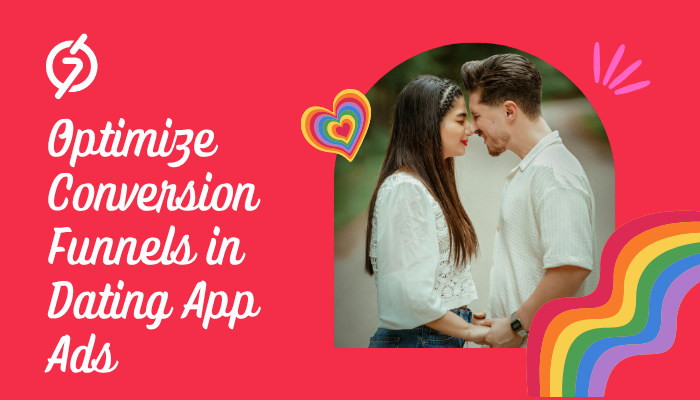The dating app market isn’t just booming—it’s transforming. Global online dating revenue is projected to cross $4 billion by 2027, driven by a user base that values meaningful digital interactions. But for advertisers, it’s not as simple as putting an ad in front of singles and waiting for conversions. The modern dating audience is cautious, privacy-aware, and often skeptical of repetitive ads. To win them over, advertisers in dating app advertising need more than catchy taglines. They need well-designed conversion funnels that move users from curiosity to trust, and finally, to action.
Understanding the Challenge
Every advertiser knows the funnel—awareness, consideration, conversion. But in dating app ads, that journey behaves differently. Dating is personal, emotional, and often private. A typical “install now” or “find love today” approach might get clicks, but it rarely earns loyalty.
Here’s the pain point: Most dating app advertisers lose users in the middle of the funnel. Users might see an appealing ad, click through, and even download the app—but stop short of creating profiles or engaging. The issue isn’t lack of interest; it’s lack of emotional connection and credibility.
Why Standard Funnels Don’t Fit Dating App Ads
Unlike e-commerce or travel ads, dating app users don’t buy a tangible product. They’re investing their time, emotions, and expectations. That changes how conversion funnels should be designed.
A traditional performance-driven ad might focus on direct installs. But in dating, the real conversion happens when users trust your platform enough to interact. This is where advertisers need to adapt their funnel logic—by balancing rational value with emotional resonance.
Step 1: Build Awareness Through Shared Experience
At the top of the funnel (TOFU), awareness campaigns shouldn’t just shout brand names. They should reflect shared experiences that dating audiences can relate to. Ads that touch on real emotions—like the awkwardness of first dates or the hope of finding someone genuine—are far more engaging than vague promises.
For instance, an ad that says “No more ghosting. Just real conversations.” connects instantly because it mirrors real frustrations. This emotional hook draws users into the funnel without feeling intrusive.
At this stage, advertisers should also explore native placements and story-driven formats. Rather than pushing installs, focus on empathy and brand warmth. That’s what plants the seed for later conversions.
Step 2: Guide Consideration with Transparency
Once you’ve earned attention, the middle of the funnel (MOFU) becomes critical. This is where many campaigns fail—not because of bad targeting, but because of unclear value communication.
Advertisers often rely on data-heavy retargeting here. But in the dating vertical, emotional clarity beats technical precision. If users feel pressured or misled, they disengage. The solution lies in transparency: show what your app stands for, who it’s for, and why it’s different.
That’s also where strong partnerships help. Working with a Dating App Advertising platform allows advertisers to reach the right audience segments without compromising trust or privacy.
The middle of the funnel should emphasize experience, not urgency. Show potential users what a safe, enjoyable interaction looks like on your app. Highlight community standards, safety features, or success stories. These subtle reinforcements make users feel ready to take the next step.
Step 3: Turn Intent into Action
At the bottom of the funnel (BOFU), everything depends on the user’s comfort level. This is where messaging needs to move from persuasive to personalized support.
Think about small nudges—reminders that respect user intent. Instead of shouting “Join Now,” say “Your next connection could be waiting—start chatting today.”
Here’s where creative personalization matters. Use storytelling visuals or testimonials that highlight real matches and conversations. Let users imagine their experience before they even sign up.
When advertisers combine emotional context with rational clarity, conversion rates rise naturally. Funnels that respect the user’s pace outperform those that rush to close.
Step 4: Re-Engage with Respect
Not every user converts on the first try. That’s why remarketing needs to feel less like a chase and more like an invitation. If someone dropped off after clicking a dating app ad, show them gentle reminders—like success stories or tips for meaningful connections—rather than pure install CTAs.
The best advertisers in dating app advertisements use dynamic creative optimization (DCO) to adjust messaging based on engagement. For instance, if a user viewed a “safety features” page, the next ad can emphasize trust and authenticity.
The goal is to make every touchpoint feel human, not mechanical.
Step 5: Use Data Intelligently, Not Intrusively
Modern users are wary of over-targeting. They want relevant ads but don’t want to feel watched. Successful dating app advertisers now focus on contextual intelligence instead of personal data.
That means aligning your ads with dating moods, locations, or interests rather than granular demographics. For example, targeting people browsing weekend event sites with messaging like “Ready to meet someone this weekend?” feels contextual and timely, not invasive.
Platforms like Dating Ad Network allow this balance—helping advertisers tap into niche dating audiences while maintaining privacy-safe standards.
When users feel respected, they respond better. The funnel becomes a relationship instead of a transaction.
Creative Personalization Over Data Personalization
This shift deserves its own spotlight. Advertisers have realized that creative personalization—ads that reflect shared emotions or humor—drives stronger engagement than those based purely on user data.
A witty, relatable story about “the weirdest first date ever” or a short clip showing mutual interest cues can make a brand memorable. When users see themselves in the ad, it’s not about data anymore—it’s about connection.
This creative approach also simplifies funnel optimization. You’re not trying to decode algorithms; you’re improving empathy and communication.
Step 6: Align Funnel Stages with Ad Formats
Each funnel stage should align with specific ad formats:
- TOFU: Native ads, influencer content, and short-form videos that build emotional awareness.
- MOFU: Carousel ads or story sequences that show app features and trust elements.
- BOFU: Direct CTAs, testimonials, or offer-based messages that make it easy to act.
Matching content to funnel depth ensures that users see the right message at the right time.
Step 7: Measure What Truly Matters
Many advertisers track clicks and installs, but those aren’t the full story. The most valuable funnel metrics in online dating app ads include:
- Profile completions (shows real engagement)
- Message initiation rate (reflects emotional trust)
- Retention after first week (indicates satisfaction)
Tracking these deeper metrics helps advertisers identify where users drop off and which emotional cues need refinement.
The Evolving Role of Trust in Conversion
Trust is the hidden currency of dating app advertising. Users must believe that your app fosters genuine interactions, not just fleeting swipes.
Smart advertisers build trust by using transparent messaging and brand consistency across all funnel stages. A reassuring tone in ad copy and authentic imagery matter more here than aggressive incentives.
Even partnerships play a role. Working with trusted ad networks reinforces legitimacy. It shows that your app values responsible, authentic advertising ecosystems.
Step 8: Optimize Creatives Based on Funnel Feedback
A funnel isn’t static. Once live, it should evolve with user feedback. Test different messages for each stage—empathy-driven vs. logic-driven—and analyze which converts better.
For example:
- If users drop after ad click, improve landing page clarity.
- If they install but don’t register, adjust onboarding visuals.
- If they register but don’t engage, trigger subtle reminders or gamified features.
Continuous refinement keeps your funnel aligned with user sentiment.
Smarter Funnels Lead to Sustainable Growth
In the long run, effective dating app advertising isn’t about short bursts of installs. It’s about nurturing connections—between users and between brand and audience. When every funnel stage supports that goal, conversions become natural outcomes, not forced results.
Advertisers who approach funnels as living systems rather than rigid pipelines gain a clear advantage. They attract better users, build stronger loyalty, and spend smarter.
If you’re planning your next campaign, now’s the right time to create an ad campaign designed for real human journeys, not just clicks.
Final Thought
The dating space will always evolve, but the psychology behind human connection remains the same. Ads that understand this—ads that prioritize empathy, trust, and transparency—will always convert better.
Optimizing funnels in dating app advertising isn’t just a technical exercise. It’s a creative challenge to blend emotion with logic, and storytelling with strategy. The advertisers who get that balance right aren’t just selling apps; they’re shaping digital relationships that feel real.
 :
https://www.pinterest.com/7search_ppc_ads/
:
https://www.pinterest.com/7search_ppc_ads/

